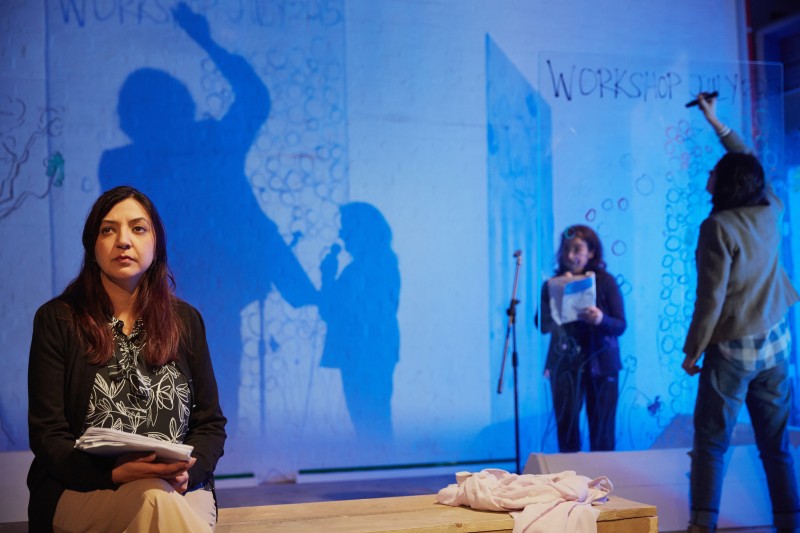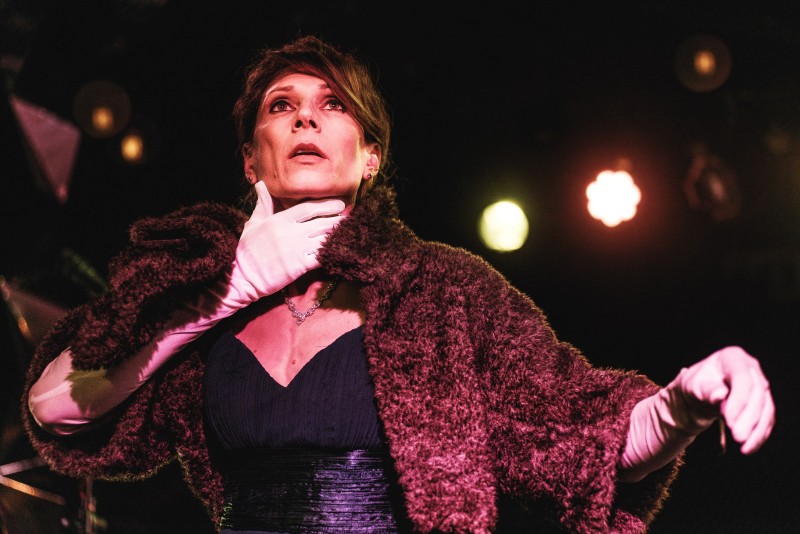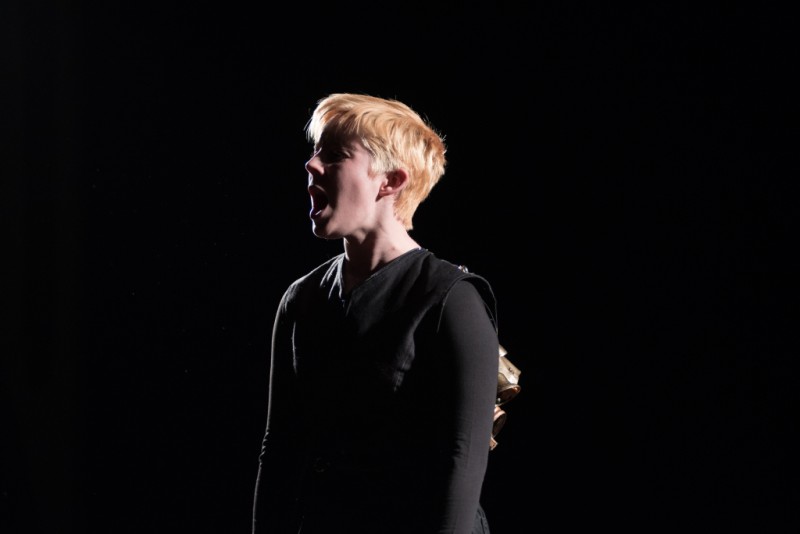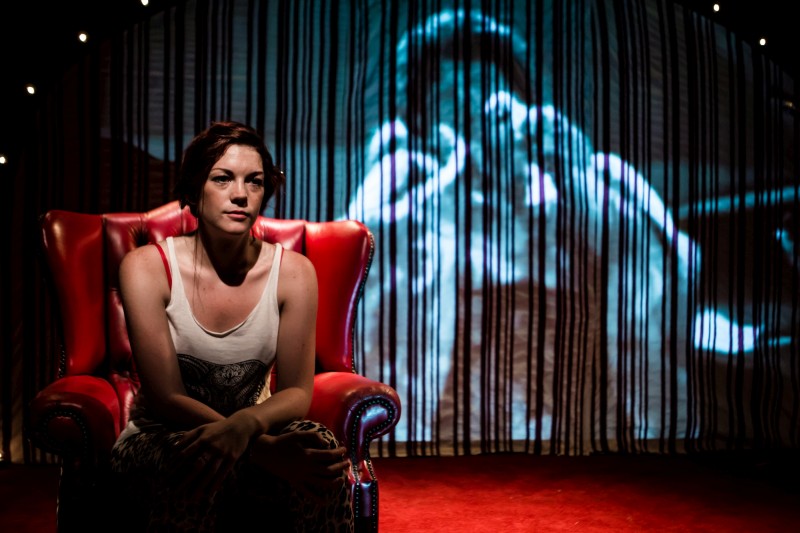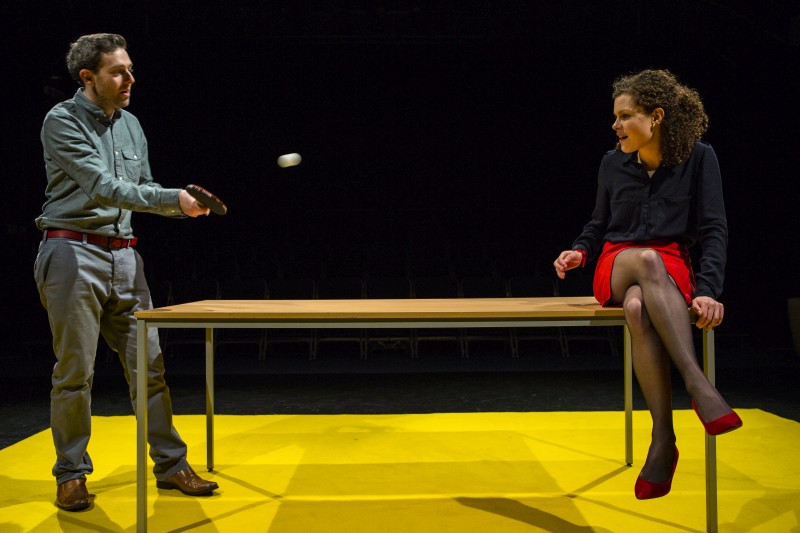 Focus Group is an adaptation of David Foster Wallace’s short story Mister Squishy, and follows protagonist Terry (Terry O’Donovan) as he reaches toward his sense of aggrieved occlusion. We, the audience, have been invited to participate in a focus group, carried out by Terry’s market research company on behalf of a major cake manufacturer (in the short story this is the titular Mister Squishy, for the play it is the ubiquitous Mr. Kipling).
Focus Group is an adaptation of David Foster Wallace’s short story Mister Squishy, and follows protagonist Terry (Terry O’Donovan) as he reaches toward his sense of aggrieved occlusion. We, the audience, have been invited to participate in a focus group, carried out by Terry’s market research company on behalf of a major cake manufacturer (in the short story this is the titular Mister Squishy, for the play it is the ubiquitous Mr. Kipling).
Focus Group opens, like its source text, in mid-flow, with corporate types playing ping pong in their office. Augmenting the game is the everyday negotiation that goes on between colleagues – and those who want to be more than colleagues – shouted across the table with every swing of the paddle. The audience following this are seated across from each other, much like in an actual tennis match, in bleacher type seating on either side of the performance space.
In between the central performance of rec room interactions, wordless montages, abstract tableaux, microwave meals for one, and actors hovering on the sidelines wearing a tiger’s head, the audience do actually participate in a parody of a focus group. The need for the audience to commit to this is stressed, although it seems likely that blank-faced silence from us would result in exactly the same show. We are played off against each other on either side, with the main character addressing one half while one of his colleagues talks about him to the other half. That creeping notion that everyone is discussing you and laughing at you behind your back? Oh, it’s true. Meanwhile, the back and forth of the ping pong games highlights the protagonist’s utter inability to connect with other humans – whether as friends or lovers. He’s just firing words at people across a room and expecting something more than more words in return.
Certain sequences presenting snapshots into the characters’ inner lives are well choreographed and artfully framed, presenting unguarded moments of tranquility and boredom and despair. Some are literal: a woman curls up in a chair and quietly reads a book, a man chooses between shirts. Others imaginary: Terry’s alpha-male colleague and rival pinned under the board room table, a concoction being brewed in a home lab. The montage technique gives a strong sense of the passing of time, and lends some much-needed lyricism to the bright yet brittle fakery of the rest of the action. The significance of the tiger head never becomes explicit.
The participatory element of the experience has the potential to be funny or awkward, with very little lead given by the cast. The answers elicited from the group are never incorporated, or even referenced again, so it feels like those parts might as well be scripted, or not happen at all. Asides do highlight just how meaningless the story’s focus groups are, though. (We learn that the fictional company our characters work for carefully targets its participants and keeps asking the questions till they get the results their client wants). It’s a taste of the futility the protagonist feels at attempting individuality in the corporate machine.
The format is a break from convention, but at heart this is yet another story of a disaffected straight white man who feels betrayed by the sense of entitlement society has bestowed upon him. The plot twist is delivered so calmly and casually that it would be chilling if it hadn’t been so clearly signposted; that inevitability of outcome though, the inescapable subsuming of self within any socially-acceptable parameters, is at the very heart of the source material, so in that respect Focus Group hits its mark. An ostensibly flippant hour of theatre with a sobering undercurrent which we only glimpse throughout, until it breaks through at the last.

